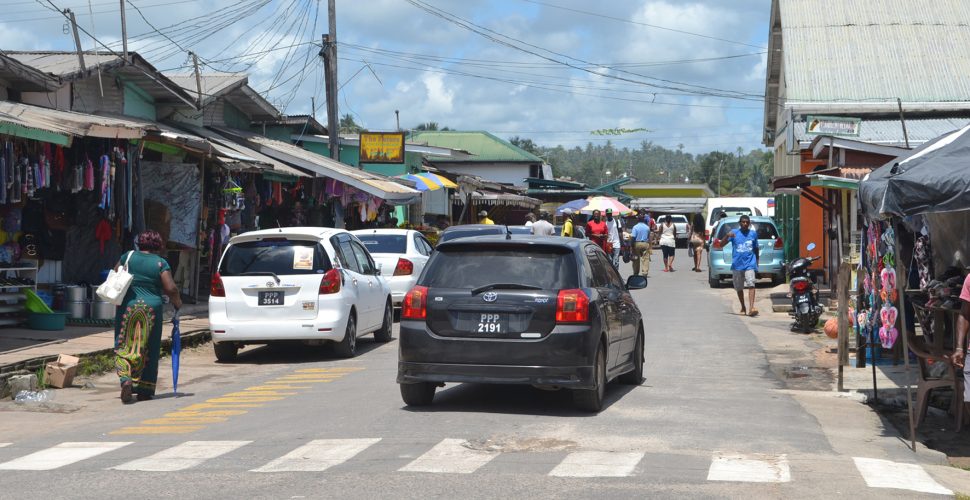The Secretary of the Linden Chamber of Commerce, Staydon Payne is under no illusions about what it will take to place Linden on a viable entrepreneurial footing. The heady days of ‘the bauxite township’ are long behind what is now a community ravaged by high unemployment and a sense that viable options are a sorry few. Business in Linden comprises, overwhelmingly, trading, mostly on a small scale and it is the state-financed Linden Enterprise Network (LEN) rather than the Linden Chamber which, these days, appears to be taking the lead in sustaining such entrepreneurial spirit as still persists here.
A measure of the fragility of the business culture in Linden is reflected in the fact that the Chamber itself has only, since last November, been resuscitated from a protracted period of dormancy. Payne makes no secret of the fact that it is trying desperately to ‘catch its length’ in an inhospitable business environment that is lacking in anything even remotely resembling a vibrant private sector.
We had discerned from the profile of LEN that entrepreneurship was mostly about small and micro enterprises and these were mostly survival tool kits, structured mostly to keep families together. Payne himself is still seeking to complete an audit of the resources needed to properly position the Chamber to fulfil its mandate which, in his own view, is to provide an effective lobby for the business community in Region Ten. Some likely areas of investment have been identified including tourism, alternative energy, gold mining and agro processing. With no investor with deep pockets on the horizon execution of projects in most of these sectors will probably have to depend on state financing.
The Chamber, meanwhile, over the last nine months, has been offering training in customer service. It has also secured the services of a business consultant to assist members who may want to apply for loans for startups and for consolidation to at least understand the fundamentals of business planning. A knowledge enhancement workshop is to be held shortly.
We were told too that the preparation of a five-year strategic plan is underway. Whatever that turns out to be it will take significant volumes of both discipline and financial resources to effectively implement.
In any new entrepreneurial dispensation the business of land tenure will have to be settled. In too many cases the occupancy of commercial spaces does not translate into possession of legal title so that the value of the land as collateral in the event that the need for borrowing arises is non-existent. We learnt from Payne that the Chamber is moving to engage the regional administration on finding a way to resolve this issue since in the present circumstances it has become difficult for existing businesses to secure capital for growth. Resolving these issues will necessitate the involvement of several state agencies including NICIL, the Central Housing and Planning Authority and the Department of Lands and Surveys. Whether Linden can afford to wait on the ponderous pace at which some of these entities work is another matter.
Challenges associated with land use planning are also plaguing the town’s business community. Payne says differentiating commercial space from residential space is a challenge and that this is another issue on which the Chamber will need to engage the Council. One cannot help but marvel at the fact that issues of this nature, so fundamental to the growth of a community, had not been long settled. It is a far from encouraging circumstance for potential investors so that any major investment in Linden at this juncture that necessitates significant land acquisition will have to cross this hurdle.
The meaningful entrepreneurial opportunities that are apparent in the Region appear to repose mostly in agriculture. In a community, however, where the need for regular and reliable earnings to support families in a high-employment situation, mining and logging appear to trump farming among able-bodied males. So that the problem with farming is that it is challenged to sustain a reliable work force – and in circumstances where mechanized farming equipment is beyond the means of the farmers, the farms are labour intensive. Farm hands, in many instances, see their jobs as ‘holding positions until an opportunity in logging or mining comes along. Payne says that a ‘conversation’ of sorts is ensuing at the community level as to how to orient people towards the land. He seems unable to say just which way that discourse is heading.
There are sixty members ‘on the books’ of the Linden Chamber. It is a modest number and most of them are modest businesses. LEN provides a sort of support mechanism for the Chamber. The complex out of which it functions and the sense of organizational tidiness you sense from engaging LEN officials appears to impact positively on the image of a patently weak Chamber.
Payne seeks to explain what, to the outsider, would appear to be a Kafkaesque business culture. It is mostly a host of determined but struggling businessmen and women managing small enterprises some of which are probably best described as ‘hustles.’ Many of the ‘hustlers’ are known to slip seamlessly from one failed ‘hustle’ to another. Their responsibility for their survival and for sustaining families means that they cannot stop. ‘Doing business’ has become a treadmill. Payne estimates that around seventy five percent of what falls under the heading of ‘business’ in Linden is about vending in one category of goods – food, clothing, cosmetics etc or another. He says that one of the Chamber’s challenges is to seek to engage those ‘business persons’ to try to get them “to think long term”. That, in the circumstances, is a formidable challenge. Tough times have a way of focusing the mind on what lies immediately ahead and that is the junction at which many of mostly small operators appear to be. Payne seems under no illusions about the tough time that lies ahead for the Chamber.






